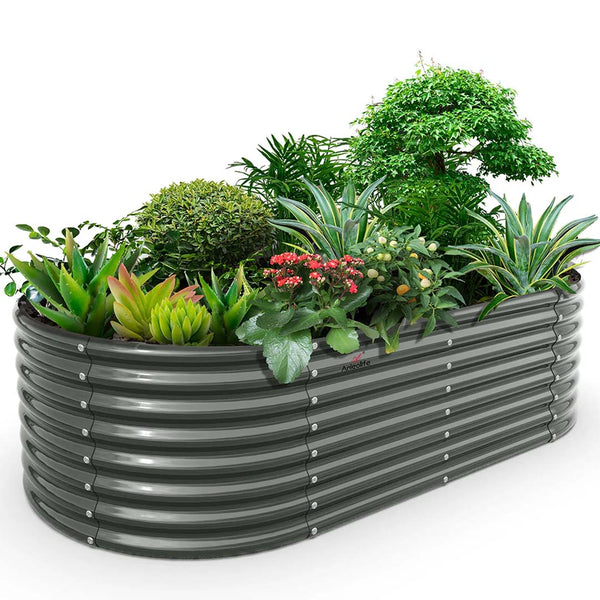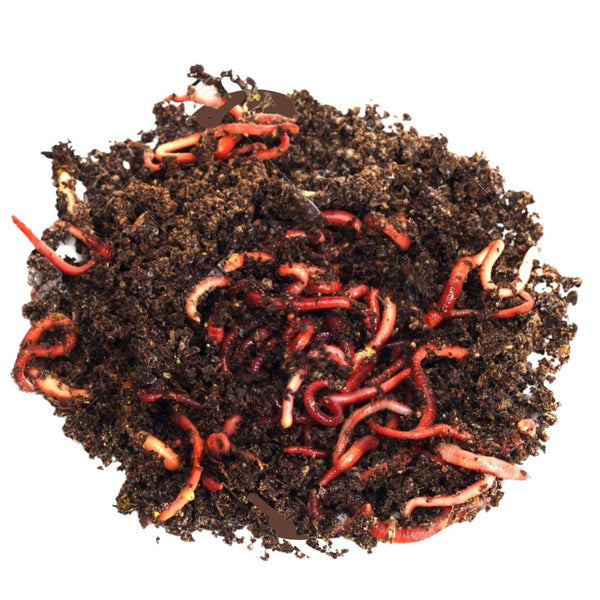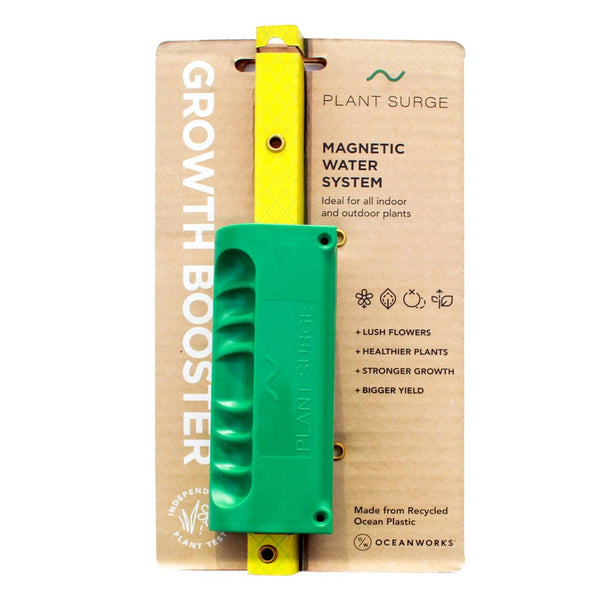The Carbon Capture Innovation: Biochar Products That Improve Gardens While Fighting Climate Change

Introduction to Activated Biochar
Getting the Dirt on Biochar
Just what is biochar? It's a super soil booster that pumps up our garden's mojo while helping tackle climate change. Think of it as eco-magic, made through a process called pyrolysis. Fancy word for heating stuff up without oxygen. We’re talking things like old crop leftovers or wood bits, turned into this charred superhero that can lock in carbon for centuries, battling climate change with style while giving our gardens a serious upgrade.
So why does biochar rock? It's all about its cool, sponge-like structure. Imagine soil that holds water and nutrients like a champ, so our plants get more out of every drop. No more endless garden hose marathons—biochar helps our soil do the heavy lifting, creating a thriving little backyard ecosystem where plants can party hardy.
| Groovy Feature | Game-Changing Perks |
|---|---|
| Porosity Plus | Sucks up water and nutrients, cutting down on watering chores |
| Carbon Catcher | Traps carbon forever, fighting climate change like a boss |
| Soil Soul | Boosts those little soil critters and nutrient hangers |
Gardeners everywhere are throwing biochar into the mix, jazzing up compost and boosting those veggie yields. Its flexibility means it's the go-to buddy for organic gardening—pair it with compost, and boom! You’ve got a soil cocktail that’s ready to support a garden party full of healthy plants.
Putting biochar in our garden game plan is more than just hugging trees—it's a smart move towards being food-wise and self-sufficient. When we're aiming for better crops and richer soil, knowing how to use biochar is like having a secret weapon in our garden shed. Curious to learn more? Check out our other topics on biochar for plants, biochar in the garden, and biochar for soil.
Benefits of Activated Biochar
Activated biochar isn’t just a fancy term for compost booster—it’s a mighty little chum for any garden buddy. Let’s roll through how this earthy superhero powers up soil health and helps your plants flourish like the rock stars they are.
Lifting Soil Quality
Activated biochar jumps into the soil like a sponge on a mission. It packs a punch by loading up on vital nutrients and acting like a personal swimming pool for your veggies during those scorching summer days. According to Earth.org, this black gold can cut down on your need for extra water and fertilizers because it's so darn good at keeping the good stuff where it belongs.
Peep at what activated biochar does to boost soil:
| Good Stuff | What It Does |
|---|---|
| Nutrient Keeper | Acts like a sticky friend, keeping the goodies nearby so plants can chow down anytime without waste. |
| pH Pal | Levels out those acidic soils, creating the perfect zen spot for lots of plants. |
| Bug Motel | A cozy spot for friendly microbes, making your soil a bustling bio-district. |
Boosting Crop Size
When it comes to helping plants reach their full potential, activated biochar is your best pal. With it in the game, your garden becomes a powerhouse of healthier crops needing less coddling. Science says this charcoal helper can ramp up plant growth and fatten up your harvests (USU Extension).
Here’s how biochar takes your crop game to an all-new level:
| Helper | Perk |
|---|---|
| Better H2O Handling | Plants stay quenched thanks to moisture-friendly soil, freeing you from the hose. |
| Nutty Goodness | Keeps nutrients hanging out right at the roots for sprouting super growth. |
| Less Chemical Fuss | Helps ditch those synthetic fertilizers, making your green thumbs all-natural heroes. |
By hopping on the activated biochar train, we’re doing a solid for Mother Nature and our garden. It’s a thumbs-up for high yields sans chemicals, lining up perfectly with the organic, feel-good vibes of regenerative gardening.
Fancy more on how biochar can jazz up your green space? Check biochar for garden or spark up your compost with biochar magic to kick your gardening game into high gear.

Production and Applications
Let's dive into the cool world of activated biochar, where the magic begins with a process called pyrolysis. This snazzy method doesn't just change organic materials into biochar—it also helps out our soil in a big way.
Pyrolysis Process
So, what's the deal with pyrolysis? Basically, you heat organic stuff without oxygen, turning it into biochar—a stable form of carbon that can lock away the carbon for a long time. This is like a secret weapon against climate change (according to Cloverly). The end product depends on what you start with and how hot you get it, which messes with how good this biochar is at sprucing up soil. A shoutout to Warren County Master Gardener Articles for backing this up.
Here's an easy-peasy look at how it all goes down:
| Step | What's Happening Here? |
|---|---|
| 1. Collecting Stuff | Grabbing organic bits (like yard clippings, food scraps, you name it) |
| 2. Heat It Up | Cranking up the heat without oxygen—no fires here, please |
| 3. Get That Biochar | You get solid biochar, plus gases that can power up things |
| 4. Chill & Tweak | Making sure biochar's all set and ready to rock |
Diverse Agricultural Uses
Biochar's had its day in the spotlight with farmers for ages, especially down in the Amazon, where it's been used in "terra preta" to boost soil goodness (USU Extension tells the tale). Even now, we're seeing biochar flex its muscle in farms and gardens.
Peep these perks of biochar for plants:
- Soil Helper: Boosts nutrient doses, soil's electrical action, and hang onto water, keeping plants perky.
- Compost's Sidekick: Hook it up with compost, and bam—nutrient delivery goes next level.
- Moisture Buddy: Got a structure that holds onto water, cutting down on constant watering and brushing off dry spells.
- Turning Trash to Treasure: Transform agri-trash and food leftovers into biochar, flipping a waste problem into a treasure trove (big thanks to RIT Sustainability Institute).
Bottom line? Pyrolysis dishes out awesome biochar goods and keeps us grounded in sustainable gardening—making our plants thrive while saving the Earth. Ready to jump on the biochar bandwagon? Your garden's about to get one heck of a superhero upgrade!
Environmental Impact and Carbon Sequestration
Reducing Greenhouse Gas Emissions
Let's chat about a superhero in the world of green thumbs — Biochar. It's like turning agricultural waste into a magical potion that tames the beast of global warming. By tossing biochar into the mix, we could chop down about 12% of the globe's greenhouse gas emissions! Just imagine Mother Nature giving us a high-five for that! Even our bovine pals are pitching in; slap some biochar into farming systems, and cow emissions might just take a 20% nosedive.
Biochar isn't just sitting pretty, either. Picture soil as its stage, where it's busy boosting soil organic carbon, standing guard against the pesky microbes, and crafting a tightly-knit soil community. This magical touch means soils with more water, richer nutrients, and locked-away carbon that refuses to budge.
| Benefit | Impact on Emissions |
|---|---|
| Reduction in greenhouse gases | Up to 12% on a global scale |
| Cattle emissions decrease | Up to 20% |
Soil Health and Carbon Storage
But wait, there's more! Biochar doesn't just stop at saving the air; it turns dirt into treasure. Mix it with soil, and voilà — you’ve got soil that's bursting with life and cutting down on how often you have to pull out the watering can. Think of it like Valentine’s Day every day for your plants: richer soil, fewer fertilizers, and a lot less water. Plus, it locks away carbon like a vault. We're talking centuries, folks — maybe even a millennia of climate-friendly vibes.
Here’s a little rundown on what biochar does for your soil:
| Soil Benefit | Description |
|---|---|
| Soil Fertility Boost | Makes soil more productive and vibrant |
| Better Water Retention | Less watering, more growing! |
| Nutrient Powwow | Fewer fertilizers needed |
| Carbon Bank | Keeps carbon locked up for ages |
Getting on board with biochar is like gifting your garden a spa day while giving the planet a big ol’ hug. It’s a win-win! If you wanna see that garden of yours thrive while being a climate hero, think about snagging some biochar products and watch the magic happen.
Implementing Activated Biochar
Adding activated biochar to our gardening routine can really perk up the soil and boost plant vitality. Let's chat about the best ways to apply it and what to think about as we dive into this eco-friendly gardening endeavor.
Application Methods
How we put activated biochar to use in our gardens makes all the difference. Here’s the lowdown on common ways to get it done:
| Method | Description |
|---|---|
| Soil Amendment | Stir activated biochar straight into the soil before you start planting. Aim for 10-20% biochar in your mix. This trick improves how the soil holds water and keeps nutrients around. |
| Top Dressing | Sprinkle a thin layer of biochar over the soil’s top. It’s great for already growing plants since it boosts topsoil conditions without messing with the roots. |
| Compost Addition | Mix activated biochar with your compost. This combo not only clings to nutrients but also revs up the microbes in your compost pile. Learn more in our biochar and compost article. |
| Liquid Biochar | Whip up a biochar slurry with water and splash it around plants to shoot nutrients straight to the roots. |
| Seed Inoculation | Soak your seeds in biochar-infused water before planting. It can give germination a leg up and kickstart early growth. |
Considerations for Home Gardening
Using activated biochar in our gardens can turn things around, but there are key factors to think about to get the most out of it:
Source Quality: Make sure to pick top-notch biochar products. Look for ones with an OMRI label that adhere to organic standards. Our guide on buy biochar near me can point you to dependable suppliers.
Pre-activation: Pre-activated biochar is a time-saver since it’s ready to roll right away. No extensive prep needed means quicker benefits.
Soil Testing: Run a soil test to see what nutrients are there and check the pH before using biochar. This helps figure out the right amount to add and if anything extra's needed.
Application Timing: Apply biochar during soil prep or as a top coat while plants are growing for the best results. Timing biochar use can vitalize plants and enhance yields.
Watch Your Watering: Biochar improves how soil retains moisture, possibly cutting down on how often you water. Adjust your watering routine to avoid drenching plants too much.
Mix with Other Goodies: Activated biochar jives well with other organic add-ins like worm castings. Look out for package deals that include various soil boosters for a nutrition-rich environment—our biochar for plants article dives into this more.
By sticking to these methods and factors, we can tap into the full power of activated biochar for our gardens. Let’s take advantage of this awesome tool for better soil and lush gardens! For more insights on implementing these techniques, check our sections on biochar in compost and biochar for garden.























